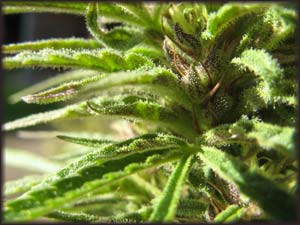 If you are looking for medical cannabis quick facts you came to the right place. Cannabis is both simple and complicated – a paradox in many ways. Whether you are a doctor looking to learn more about cannabis so you can prescribe it to your patients, a patient considering if cannabis is right for you, or a caregiver trying to help a loved one, it can seem overwhelming at first. This page is intended to help you get a quick overview of the basics about cannabis.
If you are looking for medical cannabis quick facts you came to the right place. Cannabis is both simple and complicated – a paradox in many ways. Whether you are a doctor looking to learn more about cannabis so you can prescribe it to your patients, a patient considering if cannabis is right for you, or a caregiver trying to help a loved one, it can seem overwhelming at first. This page is intended to help you get a quick overview of the basics about cannabis.
Marijuana (Cannabis) Safety
- There are no recorded deaths as a result of cannabis over-consumption.
- The lethal dose of marijuana has never been quantified because it is so high and humanly impossible to achieve but is estimated at over 1500 pounds in 15 minutes.
- There are no serious lasting side effects. There are certainly risks and side-effects to consuming marijuana but they are more mild than those of most prescription drugs.
- Side-effects generally subside in 45-minutes to an hour for inhaled cannabis and 6-8 hours for ingested cannabis depending on your body chemistry.
- Smoking marijuana does NOT cause lung cancer. In fact there is substantial research that smoking cannabis indicates a preventative effect on lung cancer.
- Dr. Donald Tashkin, Emeritus Professor of Medicine & Medical Director of the Pulmonary Function Laboratory at UCLA has reported that chronic marijuana smokers have a lower risk of lung cancer, followed by the group of chronic cannabis and tobacco smokers, then non-smokers, and of course tobacco only smokers were last with the highest risk for lung cancer. Watch Dr. Tashkin’s presentation and explanation of his findings.
- Cannabis does not interfere with your other medications.
Cannabis Intake
- Cannabis does not have to be smoked. Intake methods include vaporization, eaten in food, taken under the tongue or swallowed as a tincture, oil or even juiced.
- Smoked or vaporized cannabis enters the blood immediately. You can feel the impact immediately – often within seconds.
- Cannabis supports the body as an anti-inflammatory, neuroprotective and a vasodialator.
Legality of Marijuana
- Possession of marijuana is illegal under federal law and carries stiff penalties and consequences in many places. Know your rights!
- 23 states and Washington DC have medical marijuana laws.
- Colorado, Washington, Oregon, Alaska, and DC also legalized marijuana for recreational use.
Cannabis Science
- Cannabis is one of the most pharmacologically active plants on the planet with over 400 different active chemicals.
- The active components of cannabis exist within a tiny crystal-like structure on the plant surface called a trichome.
- Trichomes are most dense on the flower or bud. Leaves will have 25% of the density found on the bud.
- THC is the psychotropic component of cannabis and must be heated to become active.
- Cannabis, has two sub-species that are most commonly used for medical marijuana. They are Cannabis indica L and Cannabis sativa Lam.
- Cannabis indica is known and used for its sedative and relaxing properties effective in treating medical issues like anxiety, chronic pain, insomnia, muscle spasms and tremors. Indica often causes drowsiness, which is why many prefer to take it at night.
- Cannabis sativa strains are more stimulating and are often preferred for day use as they deliver a more psychoactive energetic-mind-high. This effect is caused by the higher THC levels in sativas than indicas.
- New information is starting to show that while the previous three bullets are traditional wisdom, that the cross breeding of indica and sativa might be rendering this concept outdated. The new information shows that quality and nature of the high and the therapeutic effects are largely driven by the terpene profile of the plant material more than the species of the plant. When the THC and CBD level are similar or equal in a series of samples, the differentiation reported by patients boils down to which terpenes are present and at what levels.
Follow Us!